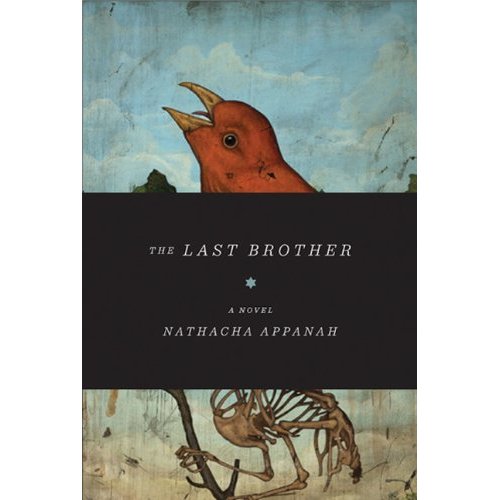.
.
“The Last Brother” is a coming-of-age story, a survivor’s narrative, and a belated history lesson. A seemingly small-scaled tale told in 200 pages, it bursts open to reveal an emotional largeness that will earn the tears of many readers.
Set on the island of Mauritius in the years 1944-45, “The Last Brother” portrays harrowing events in the life of Raj, a nine-year-old middle son of an illiterate and impoverished Indian family. The book is narrated by the now elderly Raj, who, even sixty years later, is driven by an intense search for understanding. His central memory is of a childhood friendship, brief but golden, with an eight-year-old orphan named David, one of 1500 Jewish refugees interned at the island’s Beau-Bassin prison during War War II. The novel traces Raj’s path through loss, guilt, grief and pain, toward a final, remarkable forgiveness.
Nathacha Appanah’s prose is simple and clear. The translation from the French (by Geoffrey Strachan) is beautiful. I was mightily impressed with Appanah’s unflashy but sure command of story-telling. As the story unfolds she adopts a captivating pace and rhythm. The book never flags. Appanah has an intuitive sense of when the reader needs a respite from its dark material (deaths, squalor, cruel abuse from an alcoholic father). And so she pulls us away, from time to time, to land in the present day, where the ever-seeking Raj, by now a retired teacher, quietly reflects on the lessons of six decades ago.
If there are any critical disagreements over this book, one strand will be a debate over whether Appanah has achieved the right balance between the adult Raj’s reflective and retrospective presentation on the one hand, and the immediacy of the youthful Raj’s initial encounters with pain and loss, hope and love. I,for one, think the author has managed the integration masterfully.
Each reader will find treasures in “The Last Brother.” One element that charmed me was how the unshakable love of Raj’s mother is linked to her religious instincts, which are grounded in Hindu animism. The power and magic that suffuses the natural world is a recurring motif throughout the novel. It inspires Appanah to offer striking descriptions of the flora and fauna of Mauritius. This includes the appearance of an enchanted red parakeet, a significant symbol that, you may notice, has found its way onto the book’s cover illustration. As well, the author taps into Christian iconography, starting with the fated aura of the golden-haired David.
Raj is his mother’s son, and he too seeks patterns and purpose in an all too unforgiving world. It is to Appanah’s credit that she quietly convinces the reader that this nine-year-old boy has a view of the world — and most importantly of love and duty — that is worthy of our attention and understanding.
There are insights into the psychology of family relationships, and these also serve the purpose of furthering the thematic arc of the novel. In the first chapter, the 70-year-old Raj speculates why his grown son (a successful information technology entrepreneur) has become so attentive: “But for the past few years now he seems to have all the time in the world for me. It is because I am old, the only family he has left, and he is afraid.” Of course, this fear of being orphaned, of being left behind as loved ones disappear, was Raj’s own greatest fear. Yet the most hopeful element of the book relates not to a familial continuity, but to Raj’s breaking the curse of child abuse. The final chapters being us forward to observe the adult Raj, married with son, lifted up from primitivism, achieving a modern normalcy, as represented by a scene in which Raj takes his little boy to town to pick up a newspaper. I was almost struck dumb by the powerful relief this brings. I was also stuck by an even more up to date scene between Raj and his mother who’s happy ensconced in a fine retirement home by the sea, chatting away with her new friends (the shock is that the mother has her own intelligent voice, which has been suppressed in Raj’s recounting of his early years).
It occurs to me that “The Last Brother” would make a fine addition to a reading list for high school English classes. It is an eminently “teachable” novel. Consider, as a starting point, the numerous insights of Dalia Sofer, here.
– – – – –
(A version of this review is posted on Amazon, here. An interview in which Appanah explains her attraction to the historical backdrop of the novel is available here.)
